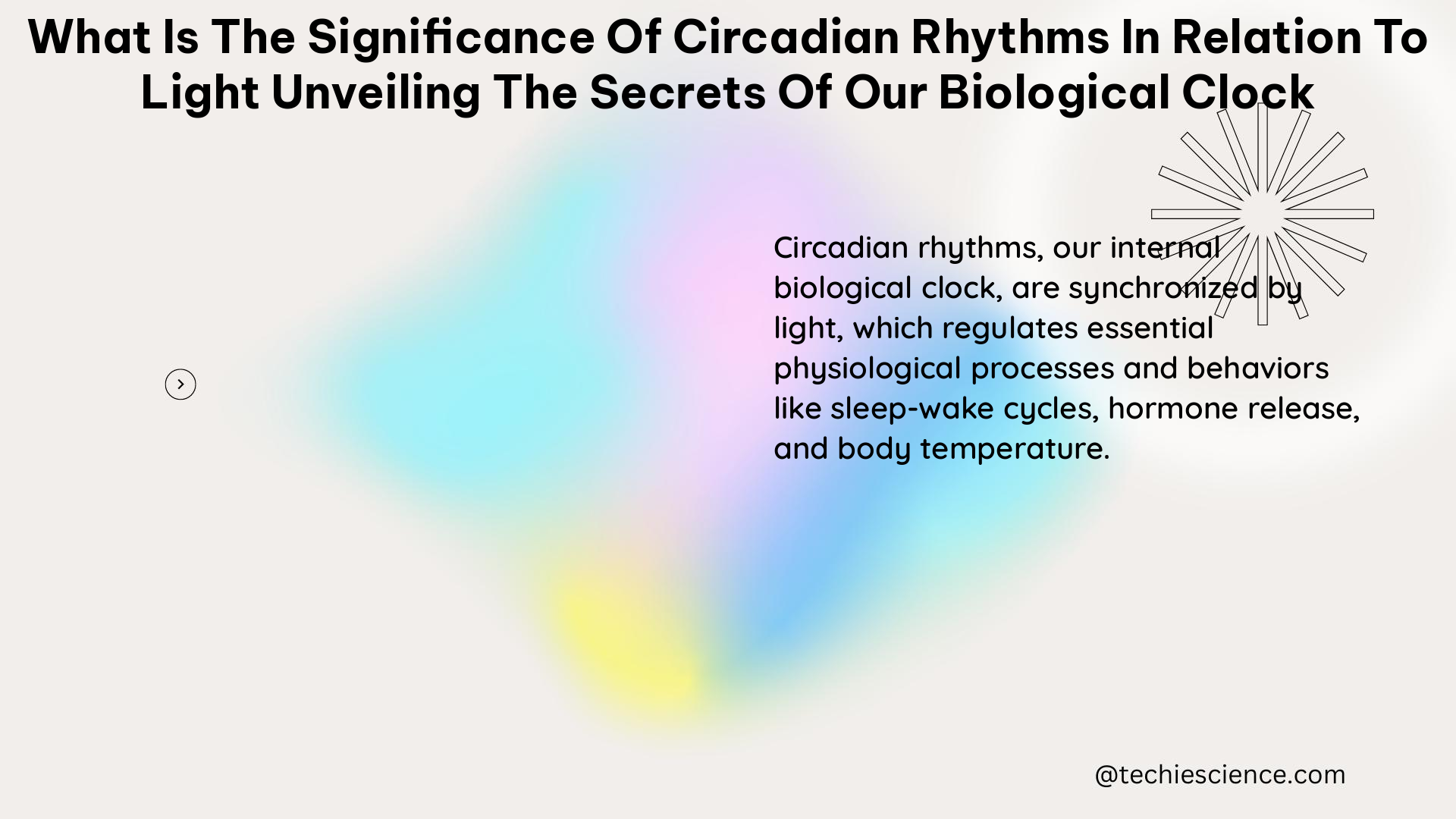Circadian rhythms are the body’s internal clock that regulate various physiological and behavioral processes in a 24-hour cycle. These rhythms are controlled by biological clocks located throughout the body, with the master clock situated in the suprachiasmatic nucleus (SCN) of the brain. The master clock operates on a cycle slightly longer than 24 hours and adjusts to maintain alignment with the Earth’s rotation by responding to environmental cues, or zeitgebers, such as light, temperature, and social interactions.
The Role of Light in Circadian Rhythms
Light is the most powerful zeitgeber for the master clock. Exposure to light in the morning triggers the release of hormones like cortisol and serotonin, which promote wakefulness and alertness. Conversely, decreased light exposure in the evening triggers the release of melatonin, a hormone that induces sleepiness and prepares the body for rest.
Theorem: The Intensity and Color Temperature of Light Affect Circadian Rhythms
The intensity and color temperature of light can significantly impact the body’s circadian rhythm. Brighter and cooler light (with a higher color temperature) tends to promote alertness and wakefulness, while warmer and dimmer light (with a lower color temperature) can induce relaxation and sleepiness.
Physics Formula: Calculating Circadian Stimulus
The Circadian Stimulus (CS) is a measure of the light’s ability to affect the body’s circadian rhythm. The CS can be calculated using the following formula:
Circadian Stimulus (CS) = 100 * (I / (I + 1000))^0.69
Where I is the illuminance in lux (lx).
A CS of 0.5 or higher is considered sufficient to maintain a healthy circadian rhythm, while a CS below 0.3 can disrupt the circadian rhythm and lead to negative health effects.
Physics Example: Morning Light Exposure
Suppose a person is exposed to 1000 lux of cool white light (5000K) in the morning for one hour. What is the CS of the light?
CS = 100 * (1000 / (1000 + 1000))^0.69 = 0.73
The CS of the light is 0.73, which is sufficient to maintain a healthy circadian rhythm.
Physics Numerical Problem: Evening Light Exposure
Now, consider a person who is exposed to 200 lux of warm white light (3000K) in the evening for two hours. What is the CS of the light?
CS = 100 * (200 / (200 + 1000))^0.69 = 0.25
The CS of the light is 0.25, which is below the threshold for maintaining a healthy circadian rhythm and can disrupt the circadian rhythm, leading to negative health effects.
Circadian Lighting Systems

To optimize the alignment between our circadian rhythms and the natural light-dark cycle, circadian lighting systems can be designed to adjust the intensity and color temperature of light throughout the day. These systems mimic the natural daytime and nighttime signals that the body would receive from the sun if we spent more time outside.
By understanding the significance of circadian rhythms in relation to light, physics students can apply their knowledge to design and implement effective circadian lighting systems that promote better sleep, cognitive function, and overall health.
Key Takeaways
- Circadian rhythms are the body’s internal clock that regulate various physiological and behavioral processes in a 24-hour cycle.
- Light is the most powerful zeitgeber for the master clock, with exposure to light in the morning promoting wakefulness and decreased light exposure in the evening inducing sleepiness.
- The intensity and color temperature of light can significantly impact the body’s circadian rhythm, with brighter and cooler light promoting alertness and warmer and dimmer light promoting relaxation.
- The Circadian Stimulus (CS) formula can be used to calculate the light’s ability to affect the body’s circadian rhythm, with a CS of 0.5 or higher considered sufficient to maintain a healthy circadian rhythm.
- Circadian lighting systems can be designed to adjust the intensity and color temperature of light throughout the day to match the natural daytime and nighttime signals that the body would receive from the sun if we spent more time outside.
By understanding the significance of circadian rhythms in relation to light, physics students can apply their knowledge to design and implement effective circadian lighting systems that promote better sleep, cognitive function, and overall health.
References
- Circadian Rhythms
- The Importance of Circadian Rhythm
- Connection Between Light, Our Biological Clock, and Productivity
- Circadian Lighting and Its Impact on Human Health
- Circadian Lighting: Aligning Light with the Body’s Rhythm

The lambdageeks.com Core SME Team is a group of experienced subject matter experts from diverse scientific and technical fields including Physics, Chemistry, Technology,Electronics & Electrical Engineering, Automotive, Mechanical Engineering. Our team collaborates to create high-quality, well-researched articles on a wide range of science and technology topics for the lambdageeks.com website.
All Our Senior SME are having more than 7 Years of experience in the respective fields . They are either Working Industry Professionals or assocaited With different Universities. Refer Our Authors Page to get to know About our Core SMEs.